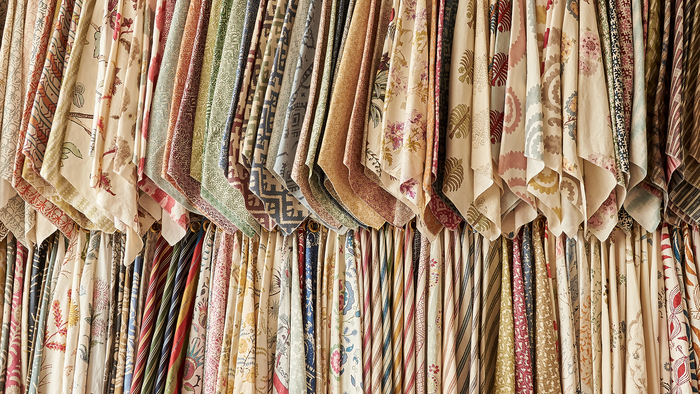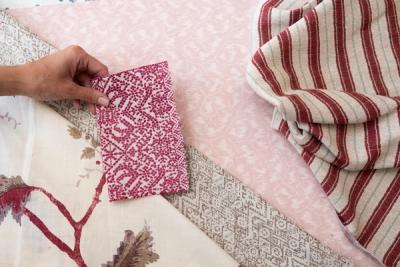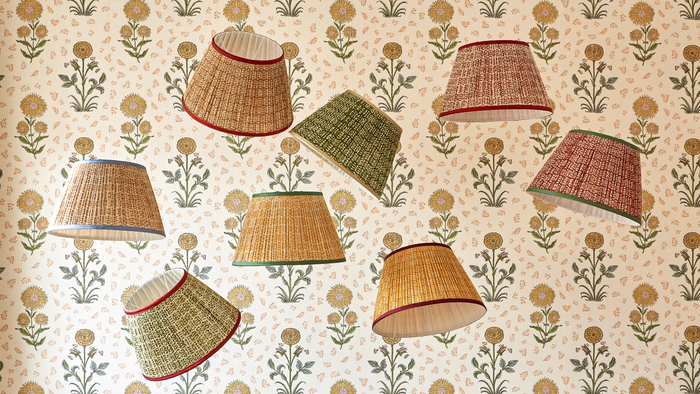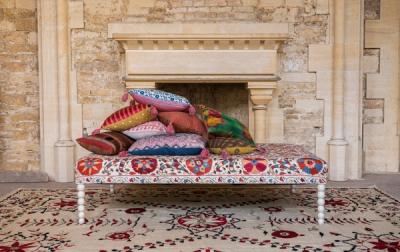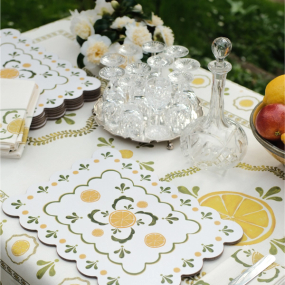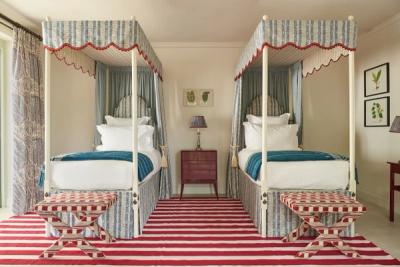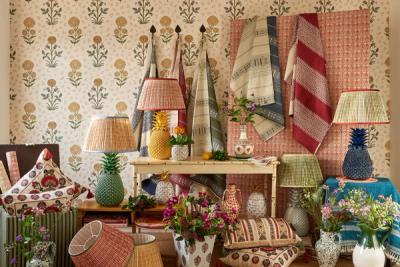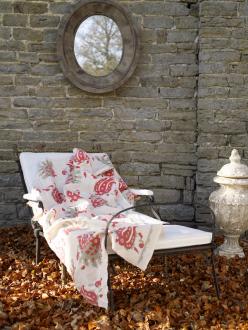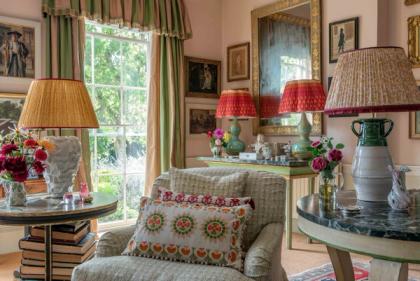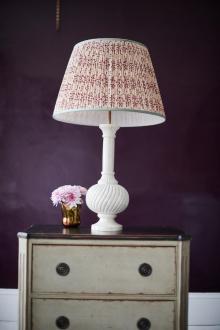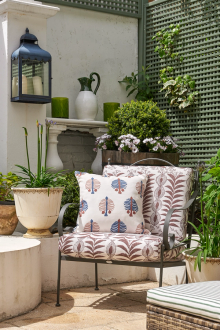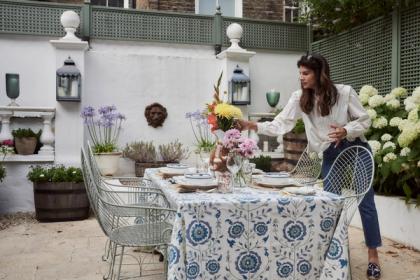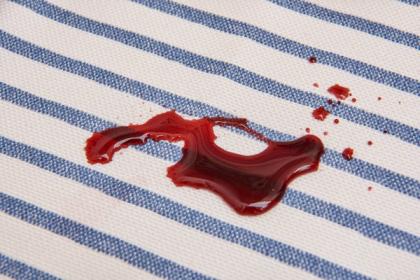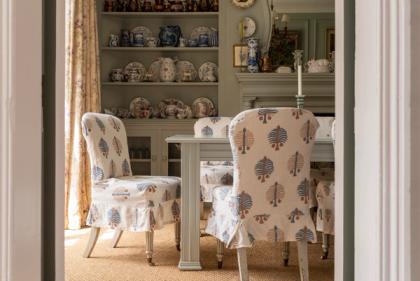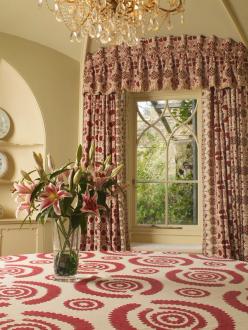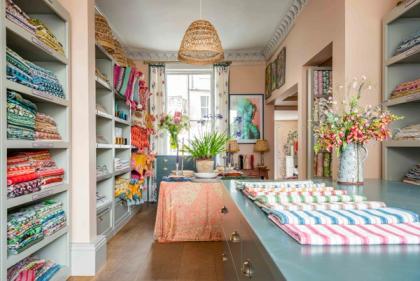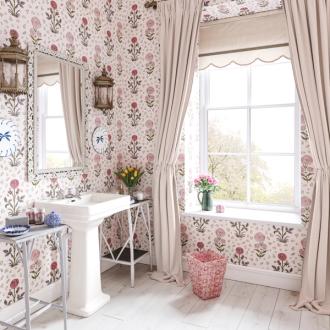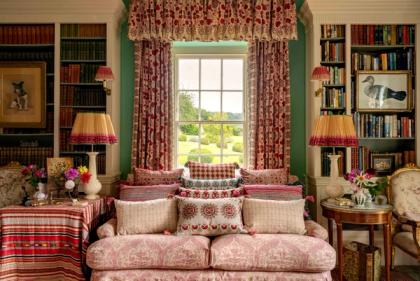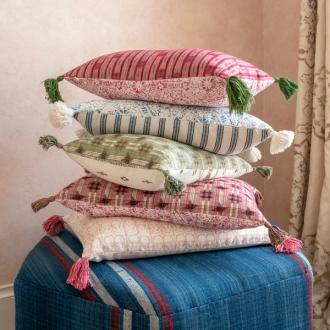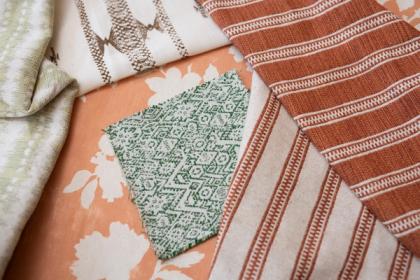The Penny Morrison Buyers' Guide to Choosing Luxury Wallpaper

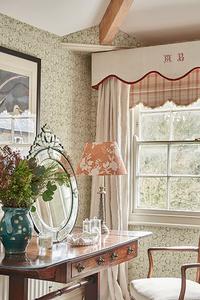
Some of the best parts of redecorating come before any of the mess and chaos of actually doing the redecorations – and, for us, sitting comfortably and reviewing wallpaper options at leisure is the best of the best.
There is a world of difference between one roll of wallpaper and the next. Prices vary tremendously based on the quality of the materials used, the designer behind the roll, how complex it is to print, and, in a broader sense, the time and skill used to bring it into being. For something that is intended to hang on your walls for many, many years, it’s very important you understand what you want, need, and should be paying for.
When we start browsing wallpaper, most of us are preoccupied by the most obvious aspects of appearance (and, really, the only aspects that we can appreciate through a screen). We focus on colour and pattern and, ultimately, let our eyes guide us to ‘the one’. While it’s not advisable, most of us could probably come to a decision through pictures alone – even if it required many, many hours of staring.
So, while there’s nothing wrong with this approach – and, if you weren’t focusing on the appearance of the wallpaper, we’d be slightly worried – it is also important to remember that, if want to find something that exhibits not just a beautiful print, but also beautiful quality and craftmanship, you’ll need to look a little closer. The key is, of course, to order your samples and not leave the decision until the last minute – but, beyond that, there are more things you should know.
Material
While you may not be able to appreciate it fully through a screen, the material your wallpaper is made from will have a big influence on its overall impact on the room, and the sense of luxury you get from it. Think of it in the same way you think about your fabrics, and how different the effect is between a quality weave and something mass-produced and synthetic.
Keep in mind that uncoated wallpaper offers a more luxurious feel
Wallpapers listed as ‘coated’ have been covered in a thin layer of vinyl or acrylic, which gives them a very smooth finish – as well as a slightly glossy appearance. While this wallpaper may well be formed on a layer of woven fabric, for instance, the print itself will have been made directly onto the coating, and none of the traits of uncoated wallpaper will remain. The benefits to this are water-resistance, and a much cheaper paper, but the finish loses that high-quality feel and appearance that you’ll find on more expensive papers.
Uncoated wallpaper, on the other hand, is less shiny, and still displays the subtle texture of the material from which it is made. It is generally more expensive and more time-consuming to hang, but most people think it’s worth the extra effort. Exactly how this texture will look, however, depends on whether the wallpaper is woven or unwoven…
Also, focus on woven wallpaper for the most luxurious finish
Unless it is formed from acrylic or vinyl, wallpaper will comprise many tiny fibres either woven together, or combined using a binder (unwoven). Unwoven papers are formed in much the same way that regular paper is formed and are also commonly referred to as ‘paste-the-wall’ wallpapers, popular for the convenience of a quick installation. They have become increasingly common over the past few years, primarily because they lend themselves to a more ‘DIY’ approach.
Woven wallpapers are the more traditional choice, and they require more skill and attention to create and apply to the wall. The fibres are almost always natural and are woven together in much the same way that textiles are woven, with a clear grainline that runs parallel to the selvage. This creates an attractive (though subtle) pattern across the wallpaper’s surface, and a more luxurious feel.
The obvious downside is that you’ll need to invest a little more into the process of installation. Woven wallpapers need to be soaked before they can be applied to the wall – a difficult skill to master. It’s a necessary step, since it allows the wallpaper to expand before application (rather than after), but it does increase the fragility, which is why the DIY approach is not recommended. Once hung, however, the extra time and money is certainly worthwhile.
Many people appreciate the subtle beauty this texture adds – and, these days, some cheaper wallpapers are even printed in a way that mimics the latticed texture of woven wallpaper but, for obvious reasons, this is nowhere near as effective – and it comes at the sacrifice of actual texture, which shouldn’t be underestimated.
Nothing brings down a room quite like a low-quality print. Even the most beautiful pattern will lose all of its appeal if it features blurred edges, irregularities, poor colour, or bleeding, and, no matter what you tell yourself, you won’t be able to ‘see past it’ once it’s up on the wall.
Don’t underestimate the benefits of hand-printed pieces…
These days, wallpaper can either be printed digitally or by hand. For obvious reasons, digital printing is a lot faster – and produces more consistent results, since there is no real room for human ‘error’. Then again, there will always be a lot of discrepancy between the quality of one producer’s digital print and another’s, so you can’t judge the entire offering from one sample alone.
On the other hand, that so-called ‘human error’ is what creates the unique, organic results that makes hand-printed papers (or any other hand-made product) so easy to distinguish from other papers produced in greater quantities. The whole process takes longer, but it’s the ideal choice if you want to capture a more bohemian, traditional feel within your home.
…or assume that all wallpaper inks and dyes are created equal
Another dead giveaway of low-quality wallpaper is colour. Cheaper papers will often betray themselves with colours that lack vibrancy – or, if you opted for a more muted palette, colours that just feel as though they are dimmer or dingier than you expected.
The best way to avoid this trouble is to pick and choose who you shop from wisely. Shops that prioritise a slower, less intensive production process – and a better-quality control process – will definitely represent the better choice here.
Ultimately, however, the only way to judge colour for yourself is to take advantage of wallpaper samples. It’s impossible for any seller to control how colour appears on different computer screens, and that’s why wallpaper samples are still just as important as ever. With samples, you can also judge the quality of the print itself – how each element stands out from the next, whether the lines are clean or messy (a definite no), and, put simply, whether or not it lives up to expectations.…or assume that all wallpaper inks and dyes are created equal
Another dead giveaway of low-quality wallpaper is colour. Cheaper papers will often betray themselves with colours that lack vibrancy – or, if you opted for a more muted palette, colours that just feel as though they are dimmer or dingier than you expected.
The best way to avoid this trouble is to pick and choose who you shop from wisely. Shops that prioritise a slower, less intensive production process – and a better-quality control process – will definitely represent the better choice here.
Ultimately, however, the only way to judge colour for yourself is to take advantage of wallpaper samples. It’s impossible for any seller to control how colour appears on different computer screens, and that’s why wallpaper samples are still just as important as ever. With samples, you can also judge the quality of the print itself – how each element stands out from the next, whether the lines are clean or messy (a definite no), and, put simply, whether or not it lives up to expectations.
You can read our top 3 tips for judging wallpaper samples for more guidance on the subject.
Help a designer let you think in terms of the bigger picture
Wallpaper is a form of art, and it’s as much a way of expressing ourselves and making a statement as framed canvases or photography on the wall. Our preferences for print and colour can, for that reason, be as significant as our tastes in other forms of art, and that’s why it is so important that you find your ‘niche’ in the big wide world of wallpaper.
If your plans go beyond just one room of the house, and you’re planning on making the most of the many ‘blank canvases’ spread between your rooms, then it can be very beneficial to home in on a particular designer who embodies exactly what you’re looking to achieve in the home. In the best designers, you will find a natural cohesivity between designs – something that makes it a lot easier to integrate new elements into the home as time goes by.
You can find an excellent example of this in , which exemplifies her passion for traditional design through a mix of bold, standout colours and softer tones. Her wallpapers and fabrics offer countless different beautiful combinations and exemplify just how valuable it can be to find yourself in a designer – just as you would any other artist.
Origin
There is nothing luxurious about a paper that has been produced on mass, without any regard for the environment or the craftsmen and women behind it. At Penny Morrison, a large part of our philosophy is slow, small-scale production – a more natural approach to creating beautiful pieces that truly live up to the beauty of the designs, and the skills that are required to make them a reality.
All of our wallpapers are printed in England in order to minimise our carbon footprint, although we frequently work with artisans from around the world on the original designs. This is how we manage to capture such a diverse range of styles – through our celebration of crafts that have been honed across the world for generations.
This is, in our minds, just as much a benchmark of luxury as the feel and look of the papers themselves, and something we would never sacrifice for the sake of speed or economy. Luxury naturally comes at a higher cost, and we consider high quality production and low-impact practices to be well worth the added expense.
Choosing
While knowing the differences between all the different wallpaper types out there is useful, it won’t be the deciding factor between one beautiful print and the next. Ultimately, that choice comes down to you and where your eyes take you – but it certainly helps to be able to narrow down your choices to those that embody the level of luxury your home deserves.
We have put together plenty of guides for anyone looking to find the right colours and print for their rooms. To get you started, take a look at our guide to finding the right pattern size for your wall.
And, most important of all, take a look at our full range of wallpapers. There, you’ll find the most practical sources of inspiration possible – and, hopefully, the pattern of your dreams.
After that, it’s down to you. Set aside plenty of time for experimenting with samples – mixing and matching – and let your instinct play its own role in the decision-making process.
